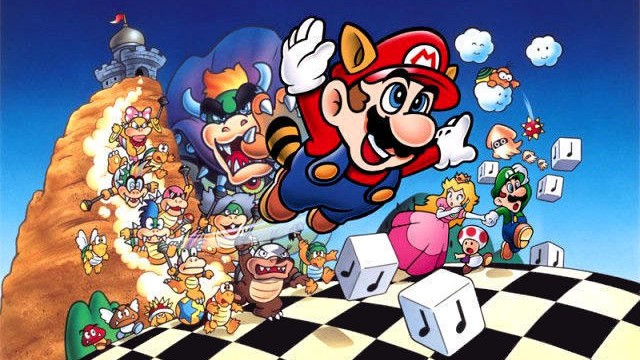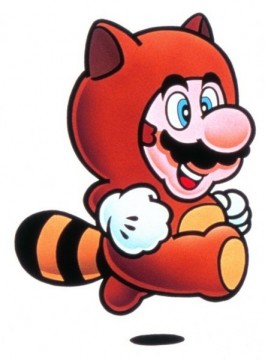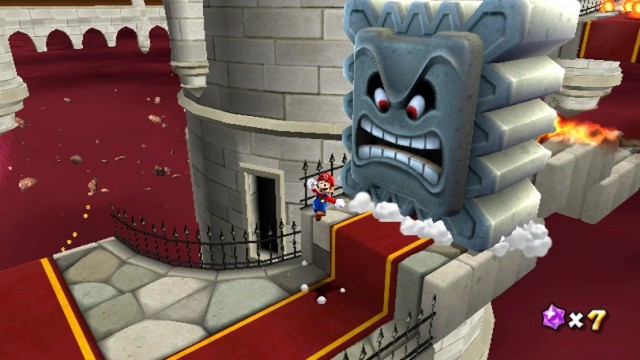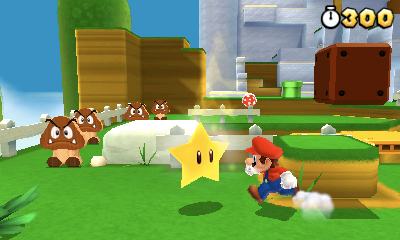
Booting up Super Mario Bros. for the first time was a revelatory experience for many. While there had been plenty of video games before Super Mario Bros. that featured 2D linear movement, none were as refined as creator Shigeru Miyamoto’s masterpiece. Despite the fluidity of that freshman effort on NES, Nintendo has worked for nearly thirty years to evolve and improve Super Mario Bros. ‘ basic control scheme. Let’s take a look at how Mario’s controls have changed over the years all the way up to this past November’s release of Super Mario 3D World!
The 2D Years

It’s been written about quite a bit over the years, but part of what made Super Mario Bros. so brilliant was the way the game taught people how to play it purely through gameplay. No tutorials, no billboards (those would come later); just the player, the controller, and the game. Part of what made this learning process so seamless was the NES controller’s excellent D-Pad, one of Game & Watch creator Gunpei Yokoi’s greatest inventions. The little black cross had only four proper directional inputs, yet it’s this simplicity that made it so easy for players to grasp. Starting towards the left of the screen, with tantalizing squares suspended in midair to the right, players instinctively nudged Mario forward to find out what laid in wait.
What made this process even more effective was the reward and punishment system the developers put in place. Playing on human curiosity was fine for getting the player moving, but hazards and prizes were meticulously inserted to teach when an action was right or wrong. Walk into a Goomba and Mario is dead. Jump on the Goomba and Mario lives. Some instigators were blatant, but others were much more sneaky. Invisible blocks, for instance, showed players that Super Mario Bros. didn’t play by any normal rules book. Suddenly, people were making Mario jump all over the place hoping to find more secrets. All these gameplay features that most players take for granted now continue to be as useful today as they were in the ’80s.
Up until the release of Super Mario World, every Mario game followed this formula with great success. Different powers and abilities were introduced over the years, including flight and grabbing items, but for the most part the basic control scheme remained untouched. It was when Nintendo 64 bowed that the tried and true basics of Mario movement and controls received their most drastic overhaul. With 360 degrees of free-roaming at Nintendo’s disposal, Miyamoto had to translate everything that made the 2D Mario games work into a 3D environment.
The 3D Years

The Nintendo 64 controller is famous for using an analog stick as the primary control input, but while more versatile than a D-Pad, it meant rethinking how to teach the control instincts that Nintendo had relied on for eleven years. Considering there was no precedent for what Nintendo was trying to accomplish with Super Mario 64, it’s amazing that Myamoto and company were both developing a 3D environment and having to determine the best way for players to maneuver through it at the same time! Ultimately, Super Mario 64 would use the same sorts of cues and triggers that taught players in Super Mario Bros., but they had to be tailored differently.
For instance, Peach’s castle in the distance served as a lure to move forward much like those blocks did so many years ago, but now players had to figure out how to move into the screen. The D-Pad was simple, as its directions correlated to movement very clearly on a 2D plane, but in the third dimension, well, that was another story. Yet, the analog stick, in its own way, was just as intuitive, as players discovered that tilting up prompted Mario forward, and if enough pressure was applied, the plumber would start running! For many years, a new generation of Mario players on home consoles would learn to play by playing, much like those weened on NES did, but with slightly more complex controls. It’s this complexity that Nintendo has struggled with over the years. As clean and smooth as it was to steer Mario around in 3D, nothing was as easy to understand as the 2D games. While sales and reviews of the 3D games were strong, Nintendo knew that as time carried on, some of the 2D players were being lost in the shuffle. With that in mind, the company set out to make the 3D games more universally accessible.
There were stopgaps along the way. As with the 2D games, where Mario was granted a cape and raccoon tail to slow his descent and act as a safety net for players who had trouble making difficult jumps, the 3D Mario titles would also tack on their own measures of assistance. Super Mario Sunshine introduced FLUDD, a living water nozzle that let Mario hover over hazards. It was a great addition, but further removed the series from the simplicity of the D-Pad and the A and B buttons. It wasn’t until Super Mario Galaxy that Miyamoto and his team finally started figuring out how to capture the magic of the 2D games in 3D. Elaborate control schemes were abandoned in favor of clean, simple inputs. The familiar tilting of the control stick to guide Mario remained, and the plumber’s repertoire of moves was streamlined to long-jumps, butt-pounds, and wall kicks. Though divisive to some, even the waggling of the Wii Remote to make use of Mario’s Luma friend’s abilities was simple enough. Nintendo is Nintendo, though, and even perfection isn’t always enough for the company, sometimes; there was still more the company felt could be done.
The New Era

When Super Mario 3D Land released for 3DS, Nintendo had not only provided the first original 3D Mario platformer for one of its handhelds, but had also successfully figured out how to perfectly replicate the feel of the controls in the 2D titles. 3D Land represented a merger of 3D and 2D Mario control principles. As opposed to treating the play mechanics and controls between the different types of games as exclusive, Miyamoto found that mixing the two more than ever was the truest way to engage players with limited intimidation.
Players who had spent years making Mario run with a button press found the familiar control setup intact in 3D Land. Mario’s jump, too, was shortened to mirror the general height he can achieve in 2D, which made bouncing on enemies and leaping over pits more natural. While the Galaxy games offered precise 3D platforming controls, 3D Land created a more universal feel across game types. Now, with Super Mario 3D World on Wii U, Nintendo has brought players full-circle with the first console Mario game to offer this excellent, hybrid control scheme.
Going forward, though, Nintendo has a new problem; matching the grandeur of the Galaxy series. I’ll admit, as I played through 3D World, a part of me couldn’t help but think of those two amazing Wii games. For all its creativity and fun, 3D World never surpassed the potency of Super Mario Galaxy or Super Mario Galaxy 2. I think that by combining elements of the 2D and 3D Mario games to craft the new controls found in 3D Land and World was a smart move, but now Nintendo has to map them to a third Galaxy game to really knock everyone’s socks off. Whether it does or doesn’t, one thing is certain: there are few games that have found as timeless and entertaining gameplay as the Super Mario titles, whether in 2D or 3D. We’ve been running left to right and all around for decades, and I don’t see it getting old any time soon.




 ShareThis
ShareThis






